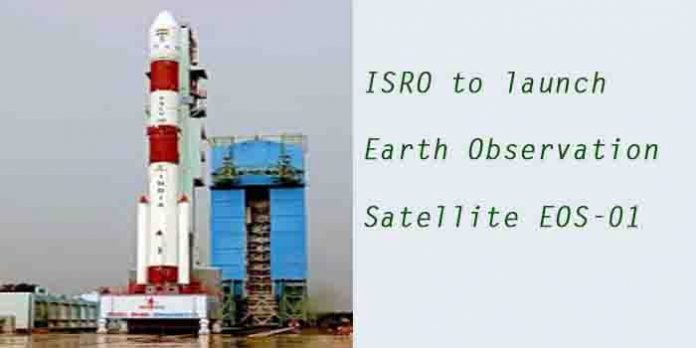The Indian Space Research Organisation (ISRO) is ready to launch its PSLV-C49 mission Saturday afternoon, with the primary payload of India’s radar-based weather imaging satellite. The proposed launch will be the first space mission for the Indian Space Research Organisation in 2020 since lockdown was imposed due to coronavirus. The Indian Space Research Organisation is preparing to launch the earth observation satellite, EOS-01 along with nine international customer satellites onboard launch vehicle PSLV-C49. The launch is scheduled for 15:02 hours on Friday. The earth observation satellite will be launched at 15:02 pm (3 pm) from Sriharikota. The ISRO on Saturday announced that the 26-hour countdown for the launch of the EOS-01 has started from the first launch pad on Friday. The rocket with 10 satellites is expected to lift off at 3 PM on November 7 from the Sriharikota rocket port. The EOS-01 is the primary payload on the PSLV-C49 mission. It is a synthetic aperture radar weather imaging satellite capable of functioning in all kinds of weather. It is a part of India’s RISAT series of imaging satellites. However, the primary passenger of the 44.5 metre tall PSLV-C49 will be the Indian radar imaging satellite EOS-01 (formerly RISAT-2BR2) with synthetic aperture radar (SAR) that can shoot pictures in all weather conditions. The satellite can take pictures day and night and will be useful for surveillance as well as civilian activities. This time around, the ISRO will be using the PSLV rocket`s DL variant that will have two strap-on booster motors. This rocket variant was used the first time to put into orbit Microsat R satellite on January 24, 2019.
The PSLV is a four stage/engine rocket powered by solid and liquid fuels alternatively with six booster motors strapped on to the first stage to give higher thrust during the initial flight moments. The physical launch control centre is located in the building, housing the Mission Control Centre in Sriharikota and the systems there have been replicated at the VSSC in the form of a virtual launch control centre. The satellite was originally called RISAT-2BR2, but has since been renamed EOS-01 in accordance with ISRO’s new naming scheme for satellites. The satellite will aid forestry, agricultural, and disaster management. The C49 mission is the 51st mission of the PSLV and the second to be flown in the DL configuration, where instead of four, only only two 12 metre-high strap-on boosters with 12 tonne propellant load are used. In keeping with the pandemic protocol, gathering of media personnel is not allowed for this delayed launch. The launching gallery that usually hosts hundreds of guests has also been closed. After PSLV-C49, the next one to fly will be PSLV-C50 with the GSAT-12R satellite from the second launch pad, sometime in December.






















